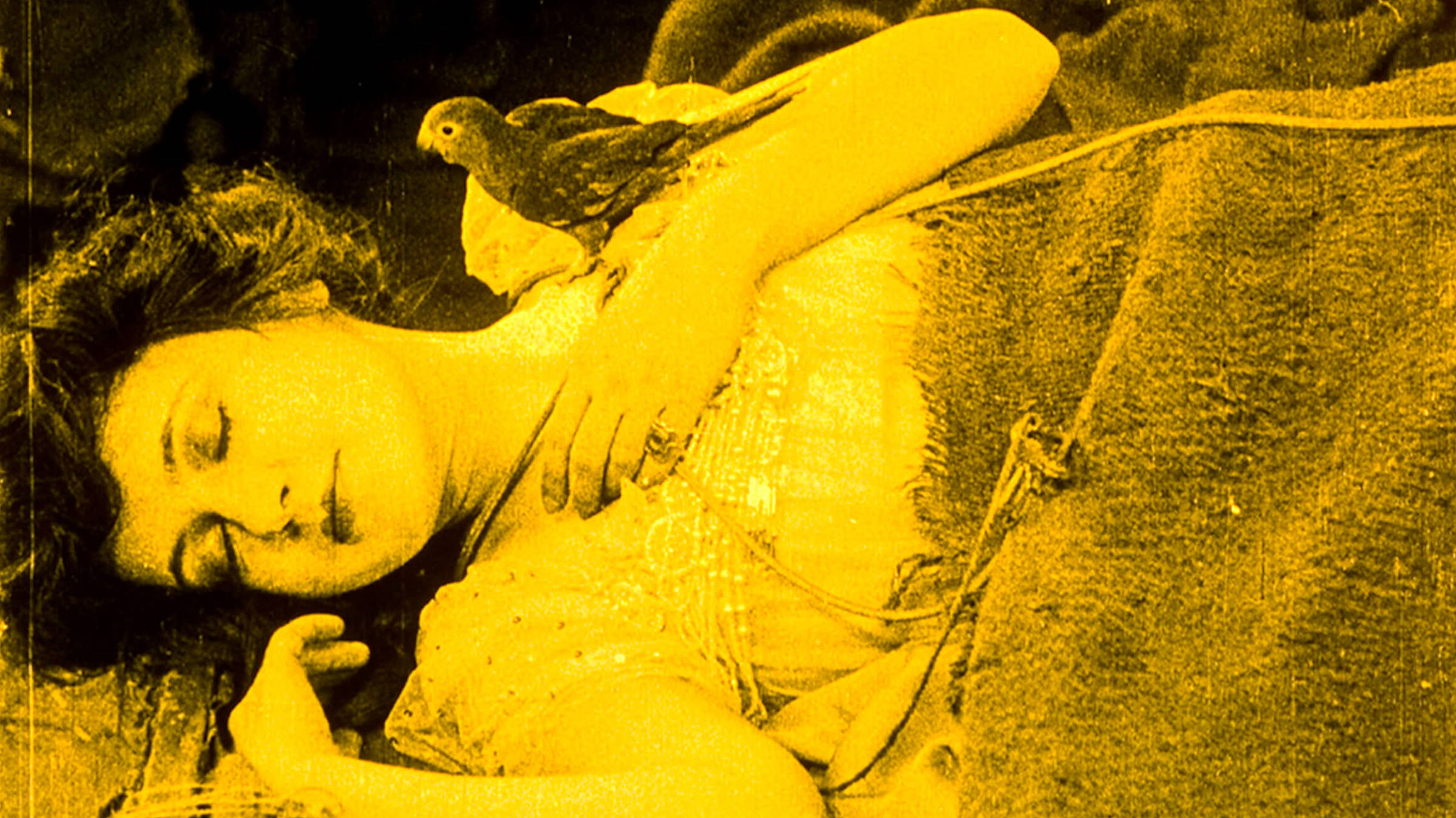This feature was published in conjunction with the screening of Snow White at Silent Winter 2013
“Her skin was as white as snow, her cheeks as rosy as blood, and her hair as black as ebony….” These words from “Little Snow White” (“Sneewittchen” in German), a story from Grimms’ collected fairy tales, could just as easily be describing Marguerite Clark, the first actress to portray the alabaster heroine in a feature-length motion picture.
Upon the release of Snow White (1916), the San Francisco Chronicle claimed “that this story … should have been put into film version in eight gorgeous and dazzling parts is one of the wonders of moviedom.” In 1914, Famous Players had signed the four-foot-ten, 31-year-old Clark, a popular Broadway actress, soon after she had completed two seasons as Snow White on the stage. In the teens, film studios often looked to the theater for seasoned talent and paid handsomely to lure serious players to the screen. Douglas Fairbanks, Marie Dressler, Nazimova, and the Barrymores were among the Broadway players that signed on to the “flickers.”
In a March 1916 issue of Photoplay, Clark spoke of being a practical woman, glad for the high paying work in the movies, but preferring the theater. “I am working simply and solely to earn my bread and butter, and my ambition is to find a good play… I shall remain in the pictures until I find one. You see how matter of fact I am. I confess that I really much prefer the stage to the pictures … After all, one loves to be able to talk.”
Clark was born in Cincinnati on February 22, 1883. Orphaned at age 11, she was raised by her older sister Cora. At 14, she attended a convent school in St. Martin, Ohio. After graduation, a lucky break began her theatrical career, as she recalled in the April 1921 issue of England’s Picturegoer magazine: “I suppose every girl who plays in amateur theatricals dreams of the night when the all-omnipotent manager from the great city will be a guest at the important function … One evening the dream came true, and when I was acting in a little charity affair, I heard it whispered that Milton Aborn had seen and had approved of my performance. And with Mr. Aborn I made my first real stage appearance one night in Baltimore, Maryland.”
After a year in Baltimore, she and her sister Cora made their way to New York City. Beginning in 1900, she performed in 16 plays, six of which were starring roles, before embarking on a film career. Her first film for Famous Players was Wildflower (1914), directed by Allan Dwan, and she went on to star in almost 40 titles, reprising many of her stage roles, such as Little Eva in Uncle Tom’s Cabin (directed by Snow White’s J. Searle Dawley). Like Mary Pickford, she even starred in a 1918 short promoting war bonds, The Biggest and Littlest Lady in the World.
Both diminutive and known for playing young girls on stage and screen, “America’s Sweetheart” and Clark were promoted as rivals by the press. Historian Daniel Blum wrote in 1953 that “Marguerite Clark was the only star who threatened [Pickford’s] supremacy.” During Clark’s first year in movies, Pickford appeared in eight films to Clark’s seven. Four years after her film debut, Clark was second only to Pickford in a 1918 Motion Picture Hall of Fame contest of Hollywood’s top stars, outranking Douglas Fairbanks (in third place) and Charlie Chaplin (in 14th). After her retirement from film, Clark raised dogs, one of which she named “Mary Pickford.”
When her six-year Famous Players contract expired, she formed her own production company under First National Pictures. The company’s first film, Scrambled Wives (1921), turned out to be her last. She had planned to make a film or two each year, but after marrying Louisiana plantation owner and aviation entrepreneur Harry Palmerston Williams, she never performed again. “There comes a point when you can go no further and even if you have gone a long way life is empty without love. But there are no limits to happiness when you are married to the man you love.”

